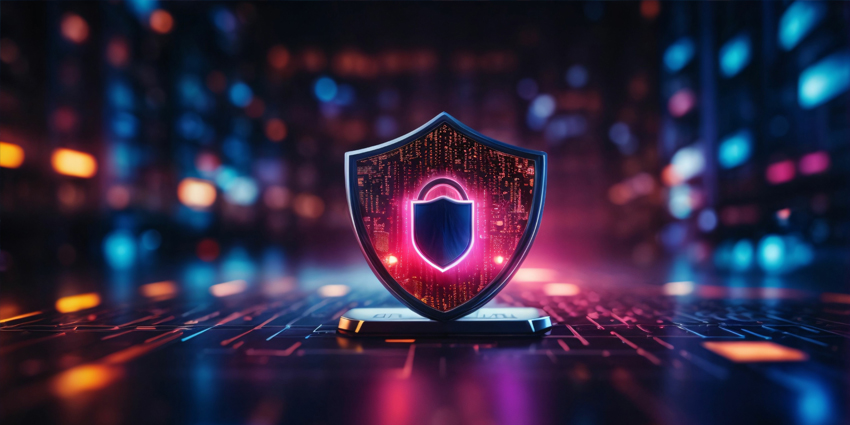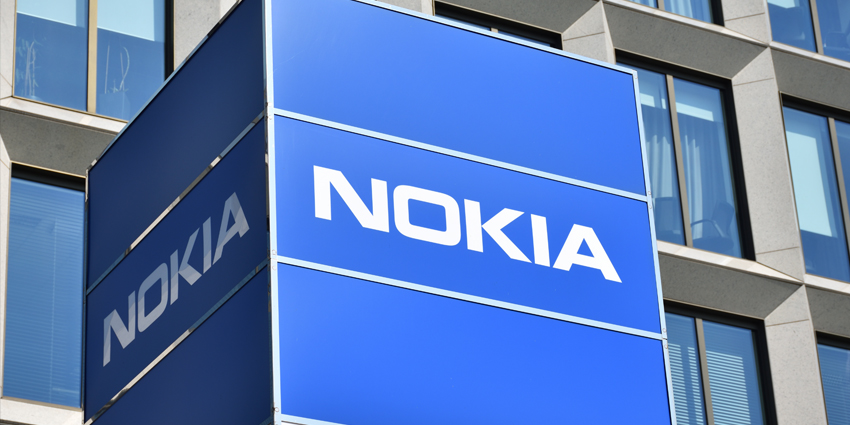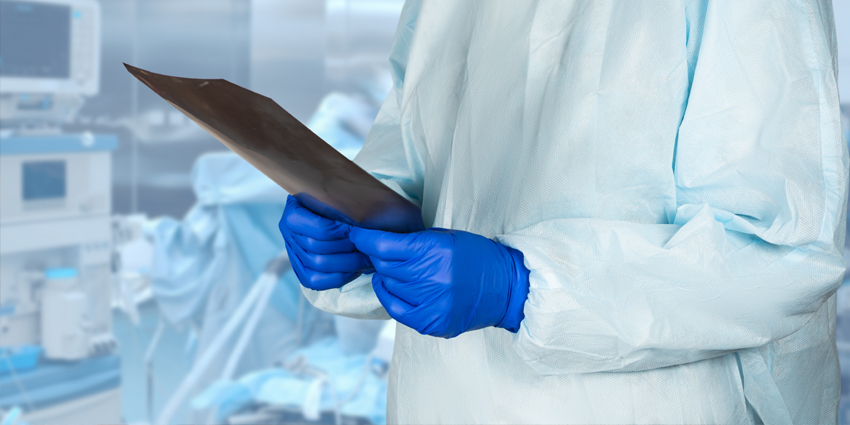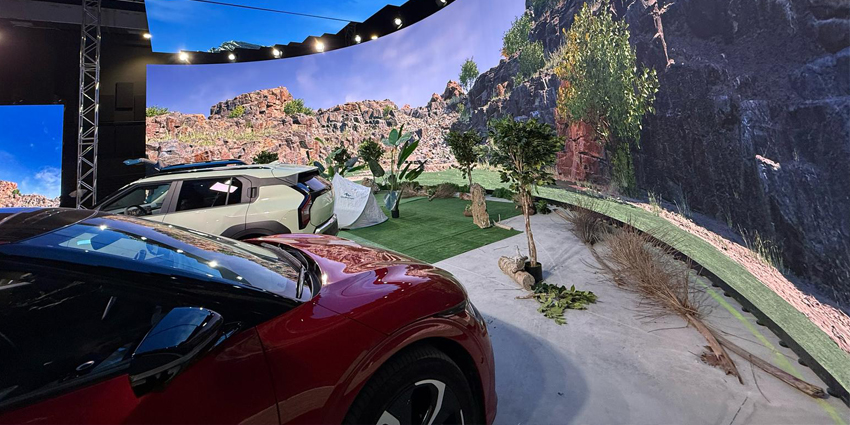GigXR, a global provider of extended reality (XR) healthcare training solutions, is working closely with Cambridge University Health Partners and the National Health Service (NHS) to create holographic healthcare simulations.
The new solutions will provide Cambridge University medical students, nurses, and doctors with a virtual space to hone their skills in clinical medicine.
To explore the role of XR and other immersive technologies in healthcare, XR Today spoke with Arun Gupta, Director of Postgraduate Education for Cambridge University Health Partners and David King Lassman, Founder and CEO for GigXR.
XR Today: Can you introduce the most recent partnership between the NHS Foundation Trust and GigXR?
David King Lassman: Let me start by giving a little bit of an overview of what we do at GigXR. So, we’re based out in North America, and we’ve been up in the market for a few years now.
GigXR is a platform for the creation and distribution of holographic content, providing healthcare training to teaching hospitals, medical schools, and nursing schools.
Currently, we have customers across four continents and we’re getting increasing traction in the marketplace. The way to think about the GigXR platform is we’re building a growing catalogue of applications and delivering a range of training modules right across the healthcare industry.
Now, as a technology company, we are technologists first and foremost and we rely very, very heavily on subject matter expertise that we’re able to bring in from our strategic partners.
We’ve been working with the team at Cambridge University Hospitals for some time to work on a suite of procedural training applications—that Arun will give some more detail on—and those applications will be hitting the market later in 2022.
Arun Gupta: I’d like to speak further on how David and I met to develop the collaboration with the NHS, and in particular, Cambridge University Hospitals, Cambridge University, and its education department there.
We’re looking into how we can improve training for students, both medical, nursing, and allied health professionals, particularly in the context of the impact of COVID and how we’ve had to adapt education and training.
We’re looking at better ways of delivering training to all our healthcare staff. Of course, while simulation has been one of the mainstays of education, we’re looking at the next generation of simulation, which is XR technologies.
XR Today: How has the NHS already implemented XR technology to best address the COVID-19 pandemic?
David King Lassman: One of the things that’s probably worth saying out loud is that, with mixed reality (MR), you get a tremendous advantage in that you’re able to project holographic content onto the physical world.
We’ve been familiar with virtual reality (VR) for decades now. Typically, VR content is computer-generated graphics consumed by a single person.
What we were able to do with MR is create an environment where you can connect practitioners around the same content. This was used to really good effect in the project that we built with the NHS and Health Education England, in conjunction with an initiative spearheaded by Microsoft.
We worked very closely with subject matter experts from the NHS to produce a product we call HoloPatient: COVID-19, released free to practitioners right across the world, available through the Microsoft HoloLens App Store.
We filmed in a volumetric video capture studio. This is a soundstage that has 150 cameras where we can film a patient from every angle, to present a hyper-realistic 3D representation of that patient in video form. That we project into a physical space, a sim centre, a medical facility, or even a bedroom of somebody that was working from home.
This app allowed frontline workers to understand what a patient looked like when they presented with COVID at different degrees of the disease, how to deal with personal protective equipment (PPE), and so on.
By using MR, many benefits were brought to bear immediately. One is that you could experience this content together with other people. So, if we’re thinking about this from an instructor or student perspective, the instructor and the students could all wear MR devices and stand around the same content.
The instructor could watch the students as they identify the processes of what they need to do to treat this patient. We found that this was extremely impactful and beneficial in training doctors and physicians to cope with the trauma and impact of the pandemic.
We use that application [HoloPatient: COVID-19] across the world and it was very, very impactful. That was the beginning of our strong relationship with the NHS.
Arun Gupta: We have used it from a much simpler point of view post-COVID, in that it has helped us do remote walkarounds, remote teaching from the operating rooms, and largely, using the HoloLens more simplistically as a streaming device.
But the power of XR software allows the kind of thing that David has explained, where we can see things in MR from within the environment that people perceive.
David King Lassman: In fact, one of the features that we introduced for that product was because of how COVID forced practitioners to be socially distant, more remote. Particularly if you think about medical students, many of them would be off-campus.
What MR affords is the opportunity for students who are geographically remote to be able to participate in instructor-led tuition in MR, using nothing more than their mobile devices as a conduit to that content.
That proved to be incredibly beneficial. As we saw teaching institutions send their students off-campus and have them study from home.
XR Today: What makes GigXR stand out from other immersive eLearning solutions in healthcare and general academia markets?
David King Lassman: I’ve already pointed to the fact that we are exclusively in MR. Well, XR actually, because not only can you experience holographic content, but we augment that content with information that is helpful to supplement what a student might be looking at.
So, I think that’s a big distinguishing factor, but the other thing that’s unique about what we’re doing is that, because we’re a platform, we are allowing institutions that have purchased our system to have one platform for all of their user management, session management, and content management, then have access to a growing catalogue of applications that sit on that platform.
Think of it as the Netflix model, for instance. You buy your Netflix subscription and when you come to Netflix, you see a whole range of content, some of which is produced exclusively by Netflix, others they’ve acquired, and some they’ve built in collaboration with other institutions. That’s precisely the way GigXR is approaching this toolset.
So as I said, right at the top of this conversation, we rely very heavily on the strategic relationships that we forge with institutions like Cambridge University hospitals.
We’re doing the same with institutions like the University of Michigan Medicine here in the United States, with North West Permanente being part of the Kaiser Permanente group – which is a large hospital organisation over here.
These institutions recognise that XR has a profound role to play in the way that we train tomorrow’s doctors and nurses. We think that GigXR provides this wonderful platform for that to happen and for it to flourish and grow. Right now, we’re unique in the market.
Arun Gupta: To add to what David is saying, what we’re interested in is similar to what David is doing at GigXR: to produce relevant and useful software packages and use them for educational training.
One of the things that are unique in the collaboration between ourselves, GigXR, and the Facility for Education at the University of Cambridge, is that we’re not just developing a package, but we’re trying to validate that package to make sure the utility of it is appropriate and benefits students.
XR Today: How are University of Cambridge researchers working to evaluate tomorrow’s healthcare immersive eLearning solutions?
Arun Gupta: The collaboration between Cambridge University Hospitals in the University of Cambridge is very close. We’re set on the same biomedical campus as the university.
The collaboration, particularly with the backing of the Facility for Education around educational research [at Cambridge University], is very strong and largely built around simulation training and its effectiveness.
One of the key aspects is looking at outcome objectives or indicators of the use of any simulated package, whether in high fidelity, low fidelity, or XR.
One of the unique features of what we’re doing with the collaborative approach with GigXR is to develop education packages, which can be validated and benchmarked against outcome measures, which is something we’re trying to drive at the same time.
XR Today: What feedback have you received from healthcare professionals and students using GigXR, or NHS healthcare professionals using XR solutions?
David King Lassman: Our products have been out in the market for several years now. We have a broad range of users right across the world who have been deploying our technology and integrating it into the way that they teach their student doctors and nurses.
We’re getting some really interesting empirical data points back from those institutions. Chief among them is that through MR, and particularly through the presentation of hyper-realistic content, we’re seeing knowledge retention increase in orders of magnitude.
Now, these things are very difficult to measure because it’s so new. I think as Arun pointed to, the research that we’re all collectively doing here is going to be interesting when it’s fully gathered, but certainly, anecdotally, what we’re seeing is that knowledge retention is going up and the speed to learning complex procedures is being enhanced.
We’re taking some of the most difficult, complex parts of the curriculum and presenting tools that make it easier for the students to embrace them, and they’re learning stuff quickly and more effectively.
There’s also, something that’s been fascinating in terms of some very gratifying peer feedback that we’re getting. We’re hearing [that their] students are beginning to increase their clinical thinking, clinical reasoning. They’re beginning to think like a doctor or a nurse.
For example, we were recently exhibiting at a big simulation conference here in Los Angeles, we had a visiting teacher from a very well known teaching institution here in North America, who looked at our technology and had a little bit of an epiphany.
He said, “You know, I’ve been using VR technologies for years and years and years. I know that my students, when they experienced them, never stopped thinking like a student,” partly because a lot of that content is quite ‘cartoony” because he’s seen this hyper-realistic content superimposed into the physical space.
For instance, we’re able to take a hyper-realistic holographic patient and superimpose it onto an analogue mannequin that brings that to life.
This guy said, “for the first time, I can see that my students are going to know what it is to think like a doctor.” So, when you walk into a simulation centre and you’re told that this mannequin is in code-blue, gone into cardiac arrest, is terrified, and you’re looking at an inanimate object. That’s very difficult to extend your empathy.
MR is our tool, in particular, which is helping with that, and we think it is going to continue to be transformational. The groundbreaking work that we’re doing with Arun and his team is going to push those boundaries even further.
Arun Gupta: Firstly, I completely agree with David [that] the feedback has been very positive, but I think there’s a caveat to that, which is we can easily convince the enthusiast.
Bringing the non-enthusiast along with us is where the key is to this, and as we develop better and better packages, we do that more and more easily.
The other thing is that, increasingly, we’re thinking how this sort of software be used in clinical practice. If students see that this has been used accordingly, then it actually makes it much more realistic for them when they do then become clinicians.
There are really good examples that even we are thinking about, in terms of overlaying scans such as MRI and CTS to localise things like tumours or anatomical irregularities, allowing the clinician to deliver good and safe healthcare.
Once that has become embedded in clinical practice, and it’s already happening, we’ll be able to attract non-enthusiasts.
David King Lassman: To add to that, I think one of the great benefits of a system like ours is that you’re able to experience these hyper-realistic training experiences, and you have to do it again and again and again, in a safe-to-fail environment, until these practices become part of your muscle memory.
That’s going to prepare students very effectively for making that transition into clinical practice.
XR Today: Is the Metaverse crucial for healthcare markets?
David King Lassman: I like to think GigXR has been playing in the Metaverse since its inception. I know that there’s still a little bit of confusion and conflict about what the Metaverse is. I know that companies like Meta are trying to drive that narrative.
They want your physical world completely occluded from it, in many instances, but, I like to think that one expression of the Metaverse could be how can you smash together the digital and the physical worlds, [merging] the digital world into the physical.
If you could describe that as a Metaverse experience, then we’ve been doing that for some time. That’s a very powerful paradigm. Also, what is interesting about the Metaverse is the way that it’s going to connect people in groups, particularly people with affinity interests.
One of the things that we’re trying to encourage at GigXR, as we deploy our solutions to more and more teaching institutions. They’re building their curricula around some of the technologies that we have. They’re building lesson plans and they’re getting feedback, data, and assessment points.
They start to share this with their cohort of other institutions, almost like creating a kind of “meta social network” of healthcare institutions, trainers, and students. I think that’s an extremely exciting vision that platforms like GigXR can help establish.
Let’s face it, we all need good healthcare, whether you’re in a western metropolis with lots of facilities at your disposal, or in a provincial area, or a developing country.
I think that we can come together with platforms like this, in a Metaverse environment, to support one another as we seek to deliver the best patient outcomes on a global basis.
Arun Gupta: I agree with David, particularly in the NHS, that the concept of the Metaverse is still very new. What I particularly like about the whole concept is the ability to bring people together remotely.
So, perhaps one day the training that we deliver will become standardised around the world, whether done from Cambridge or from a developing country somewhere.
It will be accessed by all those who show interest, and that, I think, is where the Metaverse will start being a useful thing for developing countries. It’ll be exciting to see how it is developed.
If you’re looking for more information on this topic, visit GigXR and the NHS Trust.







